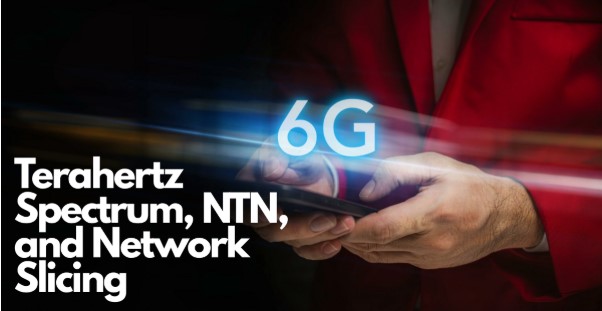6G Standardization and Roadmaps
Multiple international conferences have focused on aligning standards around Release 18 and beyond. Technical groups confirmed that frequencies in the 100 GHz to 3 THz range present compelling bandwidth capacity for 6G data speeds. Researchers emphasized that sub-THz bands offer potential for gigabit-per-second and terabit-per-second links if propagation loss is mitigated via beamforming and high-gain antennas.
Standards bodies across North America, Europe, and East Asia are collaborating through working groups such as the Next G Alliance and 6GIA to establish technical timelines for 6G deployment and vertical industry usecases. These efforts will shape service profiles for sectors like automotive, industrial IoT, and public safety. So, now let us look into Insights on 6G, Terahertz Spectrum, NTN, and Network Slicing along with Reliable LTE RF drive test tools in telecom & RF drive test software in telecom and Reliable 4G Tester, 4G LTE Tester, 4G Network Tester and VOLTE Testing tools & Equipment in detail.
Advances in Terahertz Technology
Sessions at recent engineering forums highlighted progress in sub-THz hardware—including photonic mm-wave front ends, silicon-based BiCMOS amplifiers, and advanced antenna arrays. Presenters showed early testbeds operating at 92–100 GHz, with emerging work extending into hundreds of GHz, enabling integrated sensing and communication systems within the same frequency band.
Academic reviews mapped out channel models, propagation behavior, atmospheric absorption effects, beam steering methods, and low-loss transmission techniques for THz systems. These details support the use of THz in indoor data transmission, high-resolution sensing, and ultra-wideband wireless links.
Non-Terrestrial Networks Integration
A major European standards conference brought satellite, drone, and high-altitude platform representatives together with telecom researchers. The consensus was clear: 6G will treat non-terrestrial network (NTN) elements as native parts of the architecture, not just extensions to terrestrial infrastructure.
Key technical topics included:
- Inter-satellite link protocols and handover across LEO and GEO layers
- Beam scheduling and ground-satellite resource allocation
- Mobility control for fast-moving terminal devices
- NTN-aware network slicing for isolating services across multiple layers of access.
A working group shared prototypes combining ground base stations, UAV links, and satellite coverage in a unified service layer. This cooperative arrangement supports live transitions between access types while maintaining quality of service.
Network Slicing for 6G
Researchers presented a slicing model that supports recursive resource partitioning across multiple autonomous systems. Each slice can extend across terrestrial and non-terrestrial infrastructure, with coordinated control of routing, latency, and bandwidth fairness.
In these trials, slices were assigned to specific service classes: multicast streaming, IoT telemetry, and XR use cases. AI-driven orchestration modules dynamically assigned user flows to slices based on network conditions, use-case priority, and geographic segmentation.
Architectural Themes: Softwarization and AI Control
Technical panels stressed the need for software-defined and virtualized network control. SDN/NFV infrastructure will abstract both terrestrial and NTN resources into programmable service pools. AI controllers will coordinate slice creation, traffic steering, and load balancing across different network layers.
The cloud-native stacks demonstrated in live testbeds ingest telemetry from ground and aerial sources, apply prediction algorithms, then trigger network configuration changes. This responsive architecture reduces human intervention and supports fast deployment of new service types.
Use-Case Focus: XR, Haptics, Smart Cities
One technical session highlighted future use scenarios like volumetric XR, tactile feedback over wireless, drone-based mapping, and immersive remote collaboration. These applications have high throughput demands and strict latency requirements—driving networks toward terabit data rates, sub-millisecond latency and seamless handover between access modes.
Network slicing combined with NTN coverage was presented as a solution: drones or satellites can deliver service continuity in areas where terrestrial coverage is weak or blocked. Multicast slice structures further enable efficient content delivery in dense user clusters.
Research Challenges & Next Steps
Conference whitepapers identified ongoing gaps:
- Accurate channel modeling at THz frequencies
- Cost-effective antenna design for compact devices
- Security mechanisms across hybrid TN-NTN slices
- Energy efficiency for terahertz and aerial network elements
Standardization groups are aligning on terminology, interface definitions, and deployment timing. Release 18 and beyond will embed NTN types and slicing primitives into baseline specifications.
Regional Coordination Efforts
North American, European, and Asian task forces are sharing whitepapers to unify strategic priorities. A joint roadmap between the US and EU has surfaced, mapping technology goals and policy frameworks for the next decade of wireless evolution.
These joint efforts aim to synchronize spectrum policy, vertical use-case validation, and early field trials supported by cross-border research funding.
Conclusion
Conference discussions last week consolidated a technical consensus: 6G architectures will incorporate terahertz bands, native NTN support, and advanced slicing across diverse access networks. Teams worldwide continue to build testbeds for THz-radio front ends, AI-managed core orchestration, and slice-aware NTN deployment. The next phase of 6G standardization, particularly Release 18, is expected to enshrine these capabilities into reference specifications.
Engineers and protocol experts should prepare for hybrid access control, advanced beamforming at extreme frequencies, multi-domain orchestration APIs, and AI-let slice assignment. These technologies will enable high-bandwidth immersive services, industrial IoT coverage, and always-connected global availability. The technical groundwork now is shaping operational networks that can scale intelligently, reach widely, and adapt seamlessly.
About RantCell
RantCell is a mobile app that allows users to test and monitor 4G/5G network performance using regular Android phones. Whether you’re performing indoor coverage assessments or outdoor drive tests, RantCell helps collect detailed network data including download/upload speeds, signal levels, and voice quality. The data is synced to a central dashboard, enabling real-time analysis and reporting. Also read similar articles from here.

